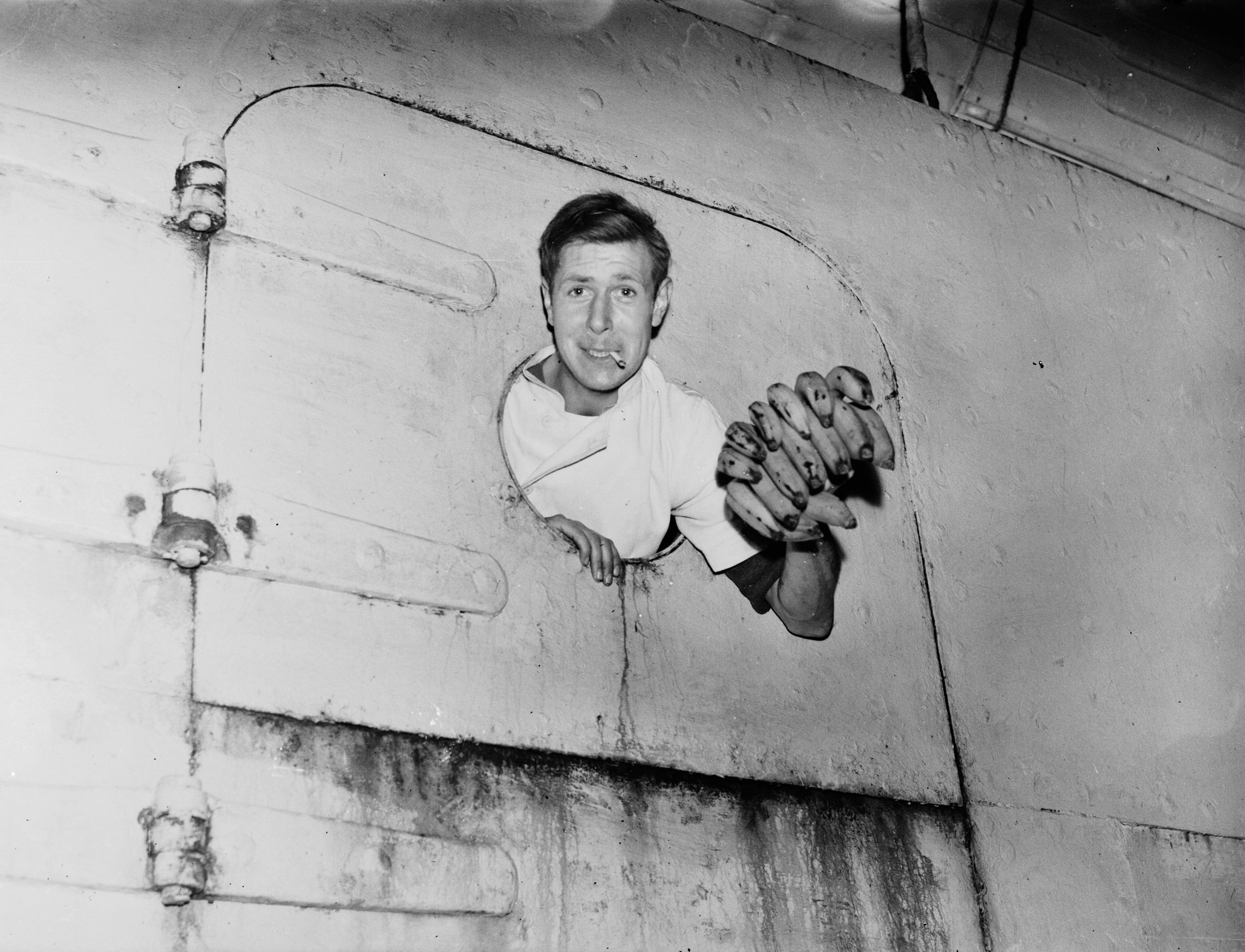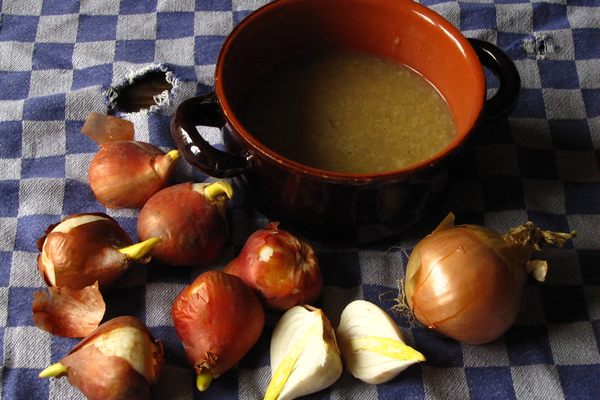To Cope With a Wartime Banana Ban, British Home Cooks Made ‘Mock Bananas’
They weren’t appealing.

It was 1940, and Britain was squarely in the blitzkrieg of the Second World War, battling the European Axis powers. But for young Joan Stokoe, then a child growing up in Northumberland, it wasn’t the war making her miserable. Nor was it that her brother Harry was away fighting, or that she had no chocolate. No, all Stokoe could talk about was bananas. She dreamed of eating them. She imagined how sweet they would taste. And she badgered her mother for some at every opportunity.
At the time, the United Kingdom was importing 20 million tons of food annually for its population of about 50 million, including nearly three-fourths of its cheese, sugar, cereals, fats, and fruit, and nearly half of its meat. The German strategy prioritized attacking this food supply through naval missions that cut off the island nation from trade. To cope with shortages, the British Ministry of Food rationed imported foods.
On November 9, 1940, the Minister of Food, Lord Woolton, ordered a complete ban on the import of bananas. The tropical fruit had to be transported in refrigerated ships, which were needed for the war effort. The sudden dearth of soft, sweet tropical fruit was a devastating blow to Britons. Wartime songs memorialized the elusive banana. Dance hall favorite Harry Roy belted out “When Can I Have a Banana Again?,” London’s Tin Pan Alley endlessly covered the American revue hit “Yes We Have No Bananas,” and the novelty song “I’ve Never Seen a Straight Banana” got regular airplay.
In addition to making decisions about food distribution, the Ministry of Food sought to educate the British people on how to eat healthfully despite limited access to food. It employed a team of home economists to tutor Britons in a new subgenre of cookery utilizing war-time rations. Of these, Marguerite Patten, one of the first television chefs in the United Kingdom, would become best-known as “the queen of ration-book cuisine.”
Patten held demonstrations at grocery stores and factory canteens, showing the British populace how to eat well on a modified diet. Mock sausages (made with lentils), mock fish cakes (potato and bean croquettes with anchovy paste), and mock oyster soup (with artichokes in place of bivalves) became part of kitchen parlance, thanks to Patten’s reconception of austerity as an opportunity for culinary invention. And if mock entrées were in her repertoire, could mock desserts and fruit be far behind? Patten’s mock cream (margarine, caster sugar, milk powder, and a splash of milk) and mock bananas entered the British household starved for a sweet treat during thrifty times.
In the BBC’s “WW2 People’s War,” a user-submitted archive of memories of the war, Stokoe recalls, “Our mothers used to make ‘mock banana’ with parsnips. It was awful!” These distant approximations of the real fruit were actually boiled (or roasted) parsnips, sweetened and flavored with banana essence (a bottled extract, typically containing diluted isoamyl acetate), and occasionally colored yellow—a depressing gastronomic make-believe that embodied the privations of war. Carolyn Ekin, a contemporary British blogger who recreated the recipe to make a mock-banana sandwich, describes it as “rather strange and bizarre, but not unpleasant.” Ekin says she was acutely aware of its parsnip taste.
While it is difficult to determine just how commonplace mock bananas were during the war, readers readily responded to Ekin’s recreation by recalling their own encounters with the dish. “I remember a dear friend telling me she made this for her husband who loved it, thinking she had got hold of bananas in wartime,” writes one reader, “but when he found out the truth, he refused to eat any more.” In another wartime memory, submitted to the BBC archives, one Mrs. Farrow mentions that her mother would put yellow coloring on mashed parsnips and make “banana sandwiches” for school. “We thought it was bananas, as we had never tasted them before!” she writes.
In the BBC archive, Stokoe recounts that the rare gift of actual banana sandwiches arrived one blessed Sunday afternoon, when her mother’s friend sent one for the family from a stash her husband had brought from one of the “hot countries.” Stokoe’s mother mashed the banana and mixed it with some milk, to increase the meagre portion. They spread it evenly on their rationed bread with some butter. As she took a bite, Stokoe’s eyes closed. “We had never tasted anything so delicious,” she writes. “[I]t was magic.” The young girl paraded the peel to her disbelieving friends, and made her banana-deprived companions very cross.

After the war, the first shipment of bananas called for a grand parade. Footage from the Ministry of Food shows five million bananas being lifted out of the ship’s hold, in 1945, by large conveyors at the Avonmouth dock. “The first cargo of bananas has arrived at this port since the war,” a narrator ceremoniously proclaims. “We hope it’s the prelude of many more to come.” The Lord Mayor of Bristol stands with a group of children, most of whom had never had a banana before. A little girl chosen to present the Mayor with a stack of bananas is offered one. “Isn’t it lovely!” she declares happily.
That first lot of bananas was meant only as a wartime treat for children. But the Ministry evidently underestimated the adult yearning for bananas. Auberon Waugh, son of the famed British author Evelyn Waugh, describes in his memoir, Will This Do?, how his father confiscated the first postwar bananas obtained for each of the Waugh children. “They were put on my father’s plate, and before the anguished eyes of his children, he poured on cream, which was almost unprocurable, and sugar, which was heavily rationed, and ate all three,” wrote Waugh. “[H]e was permanently marked down in my estimation from that moment.”
Why the banana has become the world’s second most popular fruit (only behind tomatoes) is a mystery. Unprecedented mass production, along with aggressive marketing, certainly helped. But there also seems to be something about the fruit itself: Few fruits can boast an entire museum dedicated to their celebration, and there are more songs about bananas than any other fruit. The legend of mock bananas is a tale as much of human resilience as of the fantasies people create in the face of scarcity. Whatever their peculiar charm, one must give thanks that, for now, a banana is a banana is … not a parsnip.
Gastro Obscura covers the world’s most wondrous food and drink.
Sign up for our regular newsletter.






























Follow us on Twitter to get the latest on the world's hidden wonders.
Like us on Facebook to get the latest on the world's hidden wonders.
Follow us on Twitter Like us on Facebook